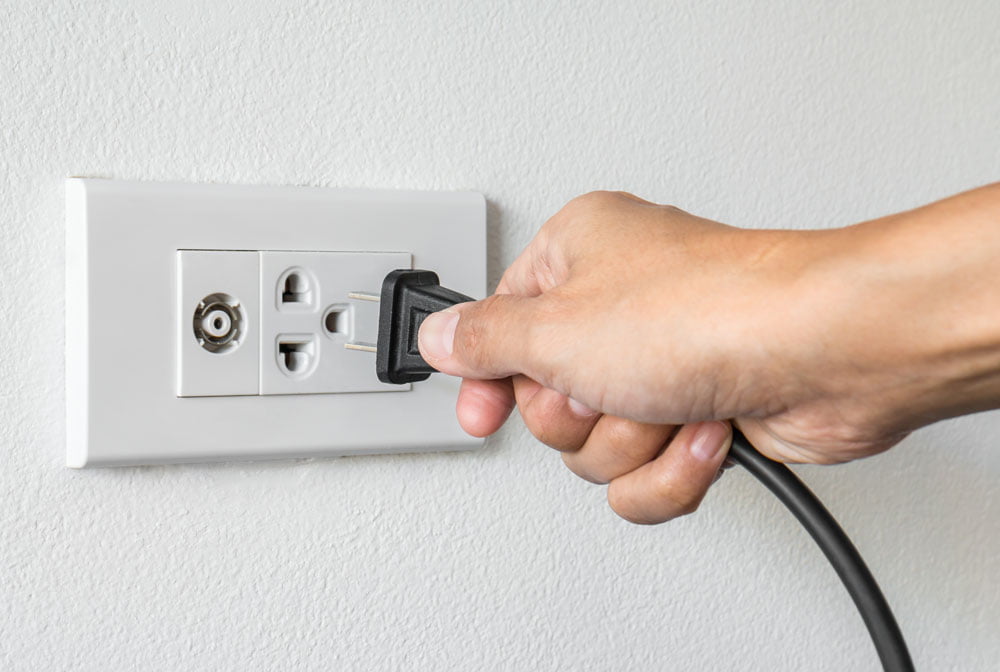Do I Really Need Slides in Every Presentation?


The “slide or no slide” argument is quite a controversial topic within the presentation industry, and we’ve spoken many times about the use of visuals in presentations. Here, Simon gives a detailed look into the pros and cons of both sides, with thorough explanations for each. The research suggests that when speaker and visuals work in harmony then both is better of the audience. But in the absence of an effective speaker then audiences would be better off and remember more if they just read the slides for themselves. And in the presence of appalling visuals, it would be better for the audience if the projector caught fire and the speaker just talked. Here’s Simon with the juice…
Yes, I know… I’m asking for trouble here, because it’s an area fraught with some very entrenched positions. I’ve recently been reprimanded on a discussion forum for speakers for describing someone’s opinions as bigoted! Harsh words indeed. At best opinions tend to be dogmatic. In the same conversation, professional speakers suggested things like “If you need slides you don’t have a presentation”.
Let me state at the beginning of this article that I’m agnostic about slides – and pragmatic. I’m a presentation skills trainer with a science background so it’s all about the empirics of what works, for me. And what works depends on what you’re trying to do. If you agree with me here, you can probably skip most of this article to be honest!
A basic problem
One of the problems I come across with the anti-sliders is that they’re looking at bad slides and saying “They’re bad”. But to be honest, that’s the same quality of logic as saying “Mice are grey; elephants are grey, therefore all mice are elephants”. Let’s lay out the times when slides are pretty much a rock-solid waste of electrons and move on, shall we?
When I reach for my iPhone to do something useful in the presentation it’s because:
- the slides are there as a script for the speaker
- the slides are so badly structured that I can’t read them or understand them
- the slides are so badly designed that I need sunglasses or a coloured filter before I can cope!
You know the ones. You’ve seen them. Let’s assume your slides wouldn’t be like that. There are more articles on how to avoid that kind of obscenity.
The no-slide argument
To cite someone in that online debate I referenced earlier – the slides are a distraction from the ‘main event’… the main event being you, the speaker. I was so annoyed by the hubris of how things were said that I barely managed to resist retorting: if you’re so boring that slides are going to do that, you’re probably so boring you need the slides!
DISTRACTION
There is, of course, the idea that splitting an audience’s attention isn’t a good thing, and I have a lot of sympathy with that. If they don’t know where to look they get confused and that can lead to a drop in attention, recollection and action – the very point of your presentation! When you’re telling a story with a very personal bent, it can be a remarkably handy tool to focus all eyes on you: it’s a very powerful moment.
Fortunately the solution is simple – just add black slides to your presentation. At the points when you want the all-eyes-on-you thing to happen, just fade elegantly to black on the screen and it’s a certainty that everyone will focus on you. (If you’re taken by surprise by the need to go to black, a less elegant solution is the B key on your keyboard.)
A suggestion I have a lot more sympathy for is the idea that slides – and all the technological paraphernalia that goes with them – makes it harder for the presenter to concentrate. He or she is splitting his attention between:
- what he or she is saying
- how the audience is receiving it
- the slides themselves (some presenters need to see their own slides!)
- the actual mechanics of pushing buttons and holding remote controls.
To be fair, the same sort of argument applies in principle to microphones, but that’s a different story. No one suggests that we should do without microphones in big rooms.
PRACTISE, PRACTISE, PRACTISE…
I’m afraid the solution here isn’t as simple as for the distraction argument. It’s a question of becoming technically competent. Rehearsals are key. All too often I find clients tell me that they rehearse, but what they actually mean is that they skip through their slides on their own computer, perhaps muttering to themselves as they go. That won’t do. What you need to do is go through the whole delivery process. Fire up your laptop, connect it to the projector or TV, hold your remote, and GO.
There’s more to rehearsal than that, of course, but this is an article about slides, not performing!
FOCUS ON THE MESSAGE
There’s another argument I hear, which is that when people are creating a presentation they spend so much time faffing around (great word, faffing!) with their slides that it takes over their focus and they forget to spend time looking at other things. Twenty minutes spent tarting up a couple of slides might very well be better spent on the floor, refining what you’re going to say.
Agreed. A little common sense would solve that problem, but it’s definitely a problem!
HOLD YOUR AUDIENCE’S ATTENTION
Finally there’s the question of the audience’s reception fatigue. That’s a bit of jargon I’ve just invented to describe the heart-dulling dread that fills audiences when the lights have to be lowered and they automatically start to disengage because of their prior experience with bad slide decks.
The only answer I’ve got to that is to use slides that don’t need the light dimmed and don’t make the audience feel like they want to be on a beach somewhere… anywhere… but we covered that right at the start by saying we’re going to take it as a given that your slides won’t be crap, right?
The pro-slide argument
For me, making presentations is about doing two things:
- staying true to the content
- delivering that content as helpfully as possible to the audience.
With that in mind, let’s just start off with addressing the elephant in the room, okay? Some things are just easier for audience to understand if they can see them. There’s no amount of spoken word that is going to describe the beauty of a particular mountain range as quickly, elegantly or effectively as a photograph. For me, this is a knock down winner of an argument. If I need to explain a cog system or a gear mechanism then a video of it on a slide can be a life-saver. If I need to look at the difference between two very similar faces, having them side by side on the screen is helpful. And so it goes on.
I’m not saying there aren’t problems and I’m not saying some slides don’t make me want to reach for a sniper’s rifle. Nor am I saying that everything is better with slides – just some things. As an example, I’ve just checked a slide deck I’m going to be using on Friday this week and it contains almost as many black slides as it does slides with content. Whether I use content or not depends on what I’m trying to communicate at the time.
Similarly, if you’re citing or quoting someone, a classy head-and-shoulders pic of them can improve the audience’s relationship with what you’re saying.
Here’s a slightly off-the-wall pro…
Not long ago, I came across a fascinating additional argument for creating good slides which I’d not considered before and it fits nicely with Einstein’s concept that if you can’t explain it you don’t understand it. It’s this idea… the process of trying to create a good slide can often help you get to grips with what you think and what you’re trying to say. If you’re trying to create good slides, it can actually focus your thinking. In short, the process of creating slides is a useful working tool in its own right, away from the presentation.
A side thought
Just because you’ve got slides doesn’t mean you have to show them!
So what’s my conclusion?
For me it’s about the message and then the audience. What that means, surely, is that presenters should take their presentation, topic by topic and decide the best way to communicate it. Surely?
Good, but how do I apply that, Simon?
Normally I’m a very scientific trainer – after all I spent over two an a half decades as a researcher – but just now I’m going to resort to my opinion and experience – it’s based on a lot of personal research and so on – but it’s just mine: feel free to disagree!
The killer question is whether you should use slides or not, right? Here’s my checklist. I’ve put it in some kind of order, but it’s not a pure hierarchy – feel free to mess around with it
- Is there some kind of overwhelming reason for going one way or the other? Are you going to get fired if you use slides? Are people going to walk out of the room on principle of you don’t have a slide deck? Will going with/without damage your career irreparably? Let’s be realistic here, sometimes you just have to go with the flow.
- Are there expectations you need to match? For example, will your audience assume that the reason you’re not using slides is because you can’t? Or will they assume that you’re not using them because you don’t need them as a crutch? My opinion here is that you should tackle this kind of thing head on and do the opposite. For example, if people might assume you’re not using slides because you can’t, use a couple to prove you can, then go to black slides, so that it looks like you’re not using slides.
- Are there concepts and ideas which are so much easier to illustrate visually than to describe that they are practically Poster Boys for the idea of ‘a picture paints a thousand words’? If so, fire up the projector! A quick test of this, albeit very rough and ready, is to ask yourself what you’d do if the electricity went down. If you’d cope without much trouble, you might ask yourself if you need the slide at all. Or to put it another way, Martin Luther King didn’t use slides for “I have a dream”. On the other hand, if you’re presentation is about how good the brush strokes are on the Mona Lisa, it’s going to be a lot easier for your audience if they can see what you’re talking about and a zoom in of the painting will be helpful.
- Are the logistics okay? Can you control the slides in such a way that they don’t get in your way? Are you confident that you’ll not look like an amateur because you can’t handle the tech or the tech will distract you from your content? If you’re not sure, turn off the laptop and see if you feel a sense of relief. Similarly, if the projector just doesn’t have the power, or the room doesn’t allow people to see properly you should think about going old-school. Nothing annoys people more than not being able see slides that are there – it’s far worse than there not being slides at all! While we’re talking logistics, check out the logistics of your preparation time and rehearsal. Do you have time to create good slides? Do you have the skills necessary or are you going to make people reach for their smartphones in an attempt to find something worthwhile to do. Far, far too many slides are so bloody bad they should be used as examples of how to obscure a simple message.
- Are your legal ducks all lined up? Are you absolutely sure you can use the images you’ve got on your slides? It’s not as straightforward as you think to use various images, so if you’re in doubt, the safest option is to avoid! I’m serious about this one. Expensively serious!
That’s it. This bit of presenting is more art than science, perhaps.













